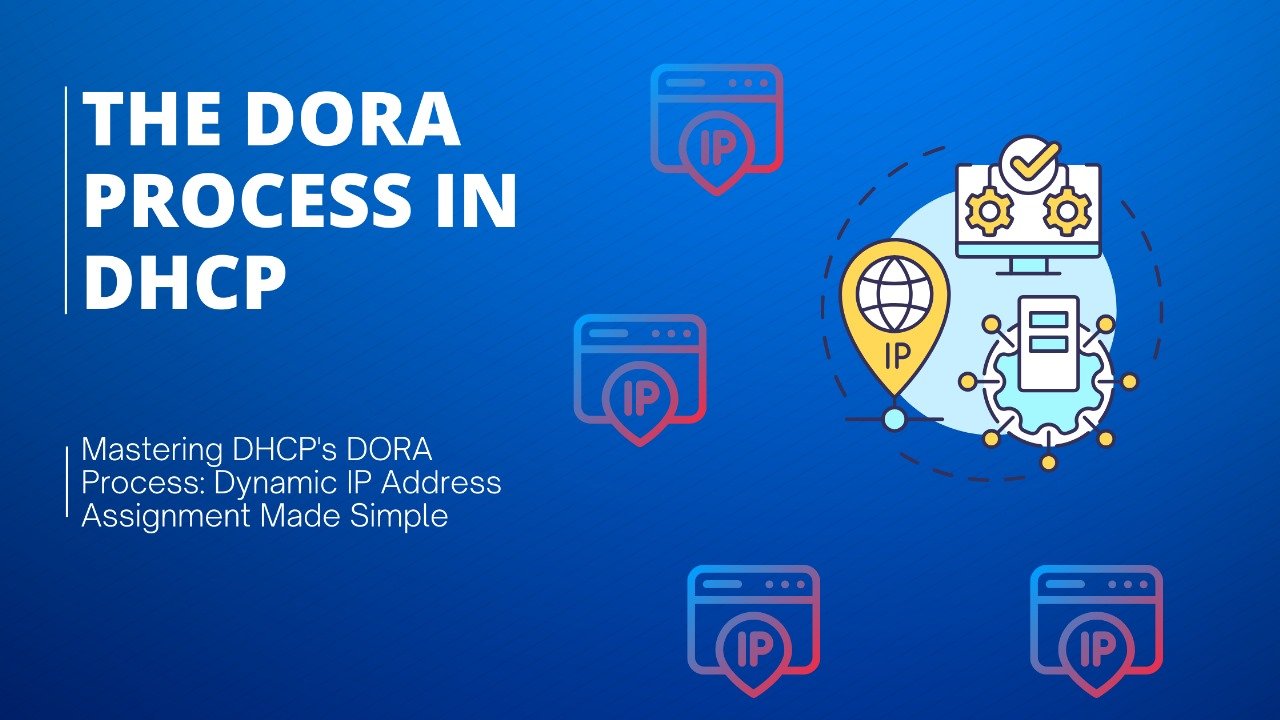
DORA Process in DHCP
Are you familiar with the term DORA?
NO, not Dora the Explorer. Although admittedly she was the first thing that came to mind the moment, I first heard of the DORA process.
In computer networking, DORA stands for.
• Discover
• Offer
• Request
• Acknowledge
DHCP uses this process to automatically assign IP addresses to client machines. If you are new to computer networking then you might be wondering what these terms mean, and why you should care. Luckily for you, I will break them down in the following section.
What is DHCP?
DHCP (Dynamic Host Configuration Protocol) is a network protocol that automatically assigns IP address and other network configuration parameters to devices on a network.
DHCP follows a 4-step process known as DORA to dynamically allocate IP addresses to devices. It centrally manages the assignment of unique IP addresses, eliminating the need for manual configuration on each device, simplifies network administration and ensures efficient communication.
What is the DORA process?
Every device requires a unique IP address to communicate. These IP addresses can be assigned either manually as static Ips or dynamically through the Dynamic host Configuration Protocol (DHCP).
The DHCP process for dynamic IP address assignment follows the DORA sequence.
• Discover: The client device sends a DHCP Discover message to request an IP address.
• Offer: The DHCP server responds with a DHCP Offer message, proposing an available IP address.
• Request: The client accepts the offered IP address by sending a DHCP Request message.
• Acknowledge: Finally, the DHCP server confirms the IP address assignment by sending a DHCP Acknowledgement message.
The client-server DORA process allows DHCP to efficiently manage the dynamic allocation of unique IP addresses across a network, rather than requiring manual configuration.
Why is the DORA process necessary?
• Dynamic IP assignment
• Automated configuration
• Ensuring unique Ips
• Reducing overhead• Supporting mobility
In this Blog, we have summarized the key steps in the DHCP process for assigning IP addresses to client devices. The DORA sequence: Discover, Offer, Request, and Acknowledge, is the fundamental mechanism that enables a DHCP server to automatically configure network settings for connected devices. This automation provided by DHCP’s process is essential for efficiently managing modern, complex networks, where manually configuring every device would be impractical. By understanding this core DHCP functionality, network administrators can leverage its convenience and efficiency to simplify network management.
FAQs Related to DORA Process:
1. What is the purpose of the DORA process?
It is a mechanism used by DHCP to automatically assign unique IP addresses to devices on a network.
2. Is the DORA process only used for dynamic IP address assignment?
Yes, the DORA process is specific to the dynamic IP address assignment done by DHCP. Static IP addresses are assigned manually without going through this process.
3. Is DHCP OFFER a Unicast or Multicast?
DHCP OFFER is a layer3 broadcast as the server doesn’t know clients’ IP addresses. It only knows the client’s MAC address.
4. What is DHCP port number?
DHCP uses UDP port number 67 for the destination server and UDP port number 68 for the client.

